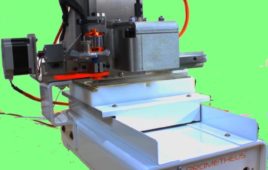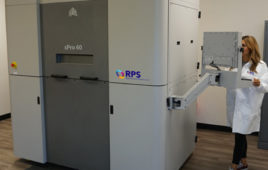The tolerance assignment approach used by most organizations offers opportunities to reduce cost and improve quality through tolerance relaxation. While quality improvement based on relaxed tolerances seems counterintuitive, a quick look at how tolerances are assigned and the consequences of overly-stringent tolerances reveal why this is so.
We assign tolerances to nominal dimensions to make parts producible and interchangeable. No one knows for sure who first attained mass-produced parts interchangeability, but most agree it occurred in the early 1800s in the United States on clocks, agricultural equipment, and guns.
Tolerances are generally inversely proportional to manufacturing cost, and this is due to the fact that tighter tolerances are usually more difficult to achieve. Manufacturing costs generally increase as tolerances are tightened, and so does rejection likelihood. From a cost perspective, we want tolerances to be as large as possible (consistent with assembly and performance requirements).
Tolerance Determination
Many organizations do not assign tolerances based on fit, performance, and process capability. What usually happens is that tolerances are assigned using one or more of the following approaches:
- The same tolerance is applied to all parts. This makes tolerance assignment easy, but production problems frequently emerge in the form of rejected components, assembly fit, or product performance.
- Tolerances are based on nominal dimensions. For example, dimensions up to 1 inch might get a tolerance of ± 0.001 inch, dimensions up to 5 inches might get a tolerance of ± 0.01 inch, and everything above 5 inches might get a tolerance of ± 0.05 inch. This less-than-rigorous approach results in the same problems described above.
- Tolerances are based on how many decimal places are in nominal dimensions. This, too, is a sloppy design approach. It’s not likely the tolerances will correspond to fit, function, or process capabilities, and the tolerance-related problems described above emerge.
- In some cases, engineers assign tight tolerances in the mistaken belief that doing so makes for higher quality parts. This is a terrible approach. It results in unnecessary manufacturing cost and increased rejections. Although engineers using this approach think it will improve quality, it has exactly the opposite effect. Quality suffers because rejections increase.
Component tolerances should be determined based on how the parts fit together, what the parts have to do, and how the parts are manufactured. The bad news is that this is not how tolerances are usually determined. The good news is that this creates enormous quality improvement and cost reduction opportunities.
Tolerance Relaxation Candidates
There are several approaches for finding areas in which we can relax tolerances. We find these opportunities by considering existing problem areas, reviewing prior “use as is” dispositions, by communicating with our suppliers, and by using more enlightened approaches for tolerance assignment.
Quality Assurance and Manufacturing know which dimensions are hard to hold because these are the folks who have to address the resulting nonconformances. Even if your organization does not have a rigorous nonconformance data base, the people in the Manufacturing, Quality Engineering, and Inspection areas are usually very much aware of difficult-to-hold dimensions. Preparing a Pareto analysis of dominant nonconformances or MBWA (management by wandering around) will quickly highlight these tolerance relaxation candidates.
Quality Assurance and Engineering can usually quickly identify instances where nonconforming dimensions are dispositioned “use as is.” The “use as is” disposition means the nonconforming dimension is acceptable. Here’s the question to ask in these instances: If the dimension is acceptable once, why would it not be acceptable all of the time? There are exceptions (in some cases, dimensions on specific mating parts will allow the nonconforming item to be used only on that assembly). In practice, however, “use as is” dispositions are usually tacit admissions that the tolerance is unnecessarily stringent.
The Purchasing Department can ask suppliers about dimensions that are tough to hold. This is a particularly important area to explore, because it’s not likely your organization will be able to get this information without asking. You might find purchased component nonconformances in house (either in Receiving Inspection or in the assembly areas), but this doesn’t tell you what is happening at the suppliers. You may not see their internal rejection reports, but you will experience the costs associated with their rejections.
Two of the most important things any organization can do to relax tolerances are to adopt a more meaningful tolerance assignment approach (i.e., base tolerances on function, fit, and process capabilities as explained above), and use statistical tolerance analysis. Statistical tolerance analysis uses a root sum square tolerance assignment approach. This allows for tighter assembly tolerances for given component tolerances, or increasing component tolerances for specified assembly dimensions.
Risks
If tolerances are relaxed without first thoroughly analyzing the design, parts may not fit together or the assembly may not meet performance requirements. The organization can mitigate this risk with thorough tolerance analysis. Computer aided design packages make this analysis much easier than it used to be.
In highly-regulated industries, manufacturers may need customer approval prior to increasing tolerances. If this is the case, the risk of customer disapproval can be mitigated by including a complete tolerance analysis with the tolerance increase request.
Asking for tolerance relaxations as a default response when rejections occur is tempting, but the organization should identify the nonconformance root cause prior to asking for changes to tolerances. It may be that the nonconformances can be eliminated through other corrective actions without the need for a tolerance increase. Even though this may be the case, it still makes sense to explore tolerance relaxation in these situations.
Eogogics offers over two dozen courses on Statistical Tolerance Analysis, Tolerance Stack Analysis Using GD&T, GD&T, Engineering Print Reading, and related topics on product and process design, manufacturing/implementation, improvement, and management, which can be viewed at the engineering page of the Eogogics website.
Joe Berk, Principal Eogogics Faculty, possesses 30+ years of experience in all aspects of engineering. He teaches several of the Eogogics engineering courses including Statistical Tolerance Analysis. Before starting his training/consulting practice, he held senior management positions in engineering, quality assurance, and manufacturing. He’s the author of ten books on engineering. He holds undergraduate and graduate degrees in mechanical engineering from Rutgers University and an MBA from Pepperdine University.
Filed Under: Rapid prototyping




